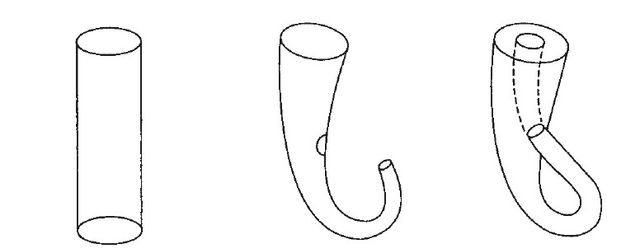-
Vijay Fafat
- Published on
This is another short Korean tale, where the author has again tried to give a parallel between a situation in real life and a geometrical object, this time the Klein bottle (also see the author’s “The Mobius Strip” in the same collection). The story involves rural workers who have gotten into a disagreement with management and now face significant struggle and strife. The workers involved have two avenues of pursuit, two separate philosophies and the author has tried to make a connection of this to the Klein bottle. As one of the young workers, who has discovered the Klein bottle at a local shop, says,
“Now I understand. In this bottle, inside becomes outside and outside becomes inside. The notion of closing has no meaning. If you just follow the wall, you get out. So in this world, the notion of enclosure itself is an illusion.”
There are other interesting passages in the story:
“This is the Klein Bottle. No inside or outside, and it has a closed space” (Ed: this appears to be incorrect since a Klein bottle does not have a volume - it can’t hold any liquid - but given the paragraph above, perhaps something was lost in translation, or maybe I have misunderstood it?
“The man of science said that even someone without educational training could bore his way to the core of a problem through common sense methods. Sticking to theory makes a problem even more complicated, so I should stick to simple terms. I observed the bottle for a long time. And said, “It really does not have an inside. I can’t tell the inside from the outside. And now I understand what they mean by a closed space”
“What was even less understandable was that the essence of the bottle was right there before my eyes but its reality was ignored and it seemed to exist only in the world of imagination”
